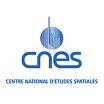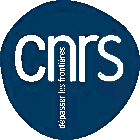|
Multi-Scale, Multi-Wavelength Source Extraction GETSOURCESThis is a powerful multi-scale, multi-wavelength source extraction algorithm. Although it has been designed primarily for use in far-infrared surveys of star-forming regions with Herschel, the method can be applied to any astronomical images. Instead of the traditional approach of extracting sources in the observed images, the new method analyzes fine spatial decompositions of original images across a wide range of scales and across all wavebands. It cleans those single-scale images of noise and background, and constructs wavelength-independent single-scale detection images that preserve information in both spatial and wavelength dimensions. Sources are detected in the combined detection images by following the evolution of their segmentation masks across all spatial scales. Measurements of the source properties are done in the original background-subtracted images at each wavelength; the background is estimated by interpolation under the source footprints and overlapping sources are deblended in an iterative procedure. In addition to the main catalog of sources, various catalogs and images are produced that aid scientific exploitation of the extraction results. There are several significant advantages of getsources over other existing methods of source extraction. (1) The fine spatial decomposition filters out irrelevant spatial scales and improves detectability, especially in the crowded regions and for extended sources. (2) The multi-wavelength design enables combining data over all wavebands, eliminating the need to match independent extraction catalogs and enabling substantial super-resolution in the images with lower spatial resolution. (3) The single-scale detection algorithm identifies sources and determines their characteristic sizes, avoiding spurious peaks on top of large structures and filaments. (4) Using the multi-scale filament extraction algorithm getfilaments (http://gouldbelt-herschel.cea.fr/getfilaments A disadvantage of the algorithm is that it may not be very fast and it may require considerable storage space, depending on the numbers of pixels, spatial scales, wavelengths, iterations, and potential sources detected; most of the space can be freed, however, after the extraction has been completed. The method has been thoroughly tested using many simulated benchmark images and real-life observations. In particular, the overall benchmarking results (Men'shchikov et al., in prep.) have shown that getsources comes on top of the other source extraction methods that we have tested in both the completeness and reliability of source detection and the accuracy of measurements. PUBLICATIONSAlgorithms used in this software are described in: Men'shchikov A., André Ph., Didelon P., Motte F., Hennemann M., Schneider N. "A multi-scale, multi-wavelength source extraction method: getsources" (2012) Astronomy & Astrophysics, vol. 542, A81. Download: A newer algorithm of image flattening is published in: Men'shchikov A. "Background derivation and image flattening: getimages" (2017) Astronomy & Astrophysics, vol. 607, A64. Download: A brief description of getsources is also published in: Men'shchikov A., André Ph., Didelon P., et al. "Filamentary structures and compact objects in the Aquila and Polaris clouds observed by Herschel" (2010) Astronomy & Astrophysics, vol. 518, L103. Download: CONTACTInquiries about the code, bug reports, constructive criticism, help requests, etc., can be directed to Alexander Men'shchikov: alexander.menshchikov@cea.fr UPDATESTo receive information on future updates of getsources, please complete the registration form below or send a message to the above address with the subject line getsources mailing list containing your e-mail address, your full name, and the name and address of your institute. To unregister, it is sufficient to send an e-mail requesting removal from the mailing list. Note. For testing an improved version 2 (including more accurate measurements in getsources and more accurate skeletons in getfilaments) please write me a message. Note on 2018-10-19. Updated the distribution archive by replacing getimages with its latest version. DISCLAIMERThe author makes no representations about the suitability of this software for any purpose. This software are provided as is without any expressed or implied warranty. The names of the institutions with which the author is or has been affiliated shall not be used to publicise any data and (or) results generated by this software. All findings and their interpretation are the opinions of the user and do not necessarily reflect those of the author nor the institutions with which the author is or has been affiliated. CODEFor information on how to install getsources and to quickly start using it, please refer to the files INSTALLATION.GUIDE, QUICK.START.GUIDE, and USERS.CHECKLIST included in the distribution archive below. Software requirements: (1) Computer with at least 4 GB of memory, many GB of disk space (preferably in locally attached hard drives: network drives are too slow). (2) Mac OS X or Linux operating system (other systems not tested). (3) Bash shell, CFITSIO library (by W. D. Pence), SWarp (by E. Bertin), Intel FORTRAN compiler or GFORTRAN version 4.5 or later (working installation), and WCSTools (by J. Mink). The latter is not strictly required, but without xy2sky from WCSTools, extraction catalogs from getsources will not provide world coordinates. DOWNLOAD#6 - Mise à jour : 13/02/2019
|

 Accueil
Accueil




